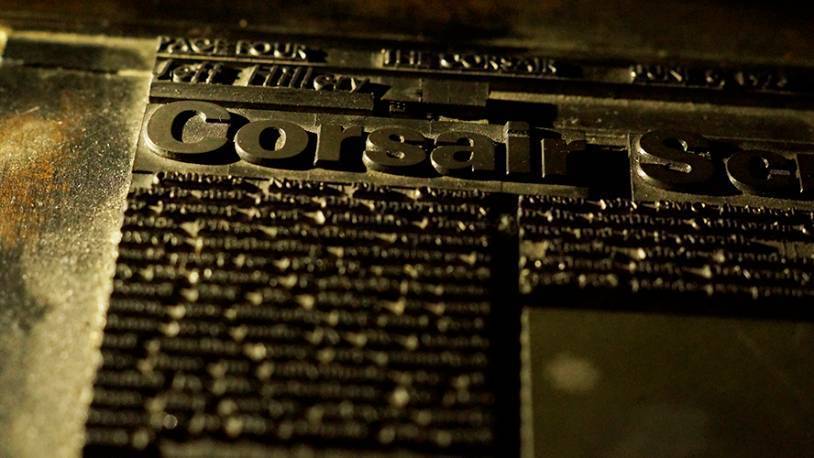
“Whatever your personal views on his swelling physique, don’t think that Santa Monica College student Arnold Schwarzenegger is just another dumbbell weight lifter. Because he’s not…” reads the beginning to a prophetic-sounding article from a November 6, 1974 edition of “The Corsair” about (arguably) SMC’s most well-known alumnus. In the article, the 27-year-old Schwarzenegger bemoans the $400 it costs to outfit his very muscular physique in a suit, and talks about the lists of goals he makes at the beginning of the year – at the time, these included taking 30 units of business and English courses at SMC, and saving $20,000.
You never know what you’ll find when you go through the historical archives of “The Corsair.” And now, it’s only a click away – thanks to a massive digitization project made possible by a Chair of Excellence award to Saul Rubin, faculty advisor and head of SMC’s journalism program. 14,000 pages of Corsair editions from 1929 through 2011 is now a searchable database hosted by the California Digital Newspaper Collection (CDNC), a virtual newsstand of historic and current California newspapers. Santa Monica College is the first community college to be included in the CDNC project. The entire collection is available at The CNDC Project searchable by the title “Corsair.”
“If anything had happened to the paper archives, all that history would have been lost,” said Rubin. “This project not only saves the Corsair archives, but it brings them to life as a digital research tool.”
So, now you can read a glaring headline from the September 4, 1930 edition of “The Corsair” which declares record enrollment at the college—of 300 students. Or a Corsair story in 1943 that details how the campus planted victory gardens in support of the war effort.
The Corsair digitization project reflects a growing movement worldwide to preserve newspaper archives as valuable historic resources, and to bring these paper collections into the digital age. The archives document the college’s transformation from an institution with 153 students in 1929 to its current status as California’s leading transfer institution with more than 30,000 students and 80 fields of study.
Rubin worked closely with former Dean of Learning Resources Mona Martin and college librarian Steve Hunt during the three-year effort.
“Students could research the archives for a specific topic and relate it to a number of subjects taught here,” said Rubin. “It would be up to instructors to determine the assignment, but it could be to write a research paper, in-class presentation, or whatever.” The potential of the archives go beyond the classroom – administrators and campus planning groups could use it to research issues related to planning, facilities, curriculum, or campus policies, says Rubin.
“Think of all the names of former students that are in the archives!” he adds, pointing out that the archives are a veritable treasure trove for a department working with future or potential students.
The paper archives – 98 bound volumes – were first cataloged by SMC library staff. Then the archives were shipped to Bethlehem, Pennsylvania, where Backstage Library Works scanned every page to create archival formats including microfilm and PDFs. Backstage then used the high-quality preservation images to generate searchable digital files that make up the Corsair digital collection.
History awaits you.



